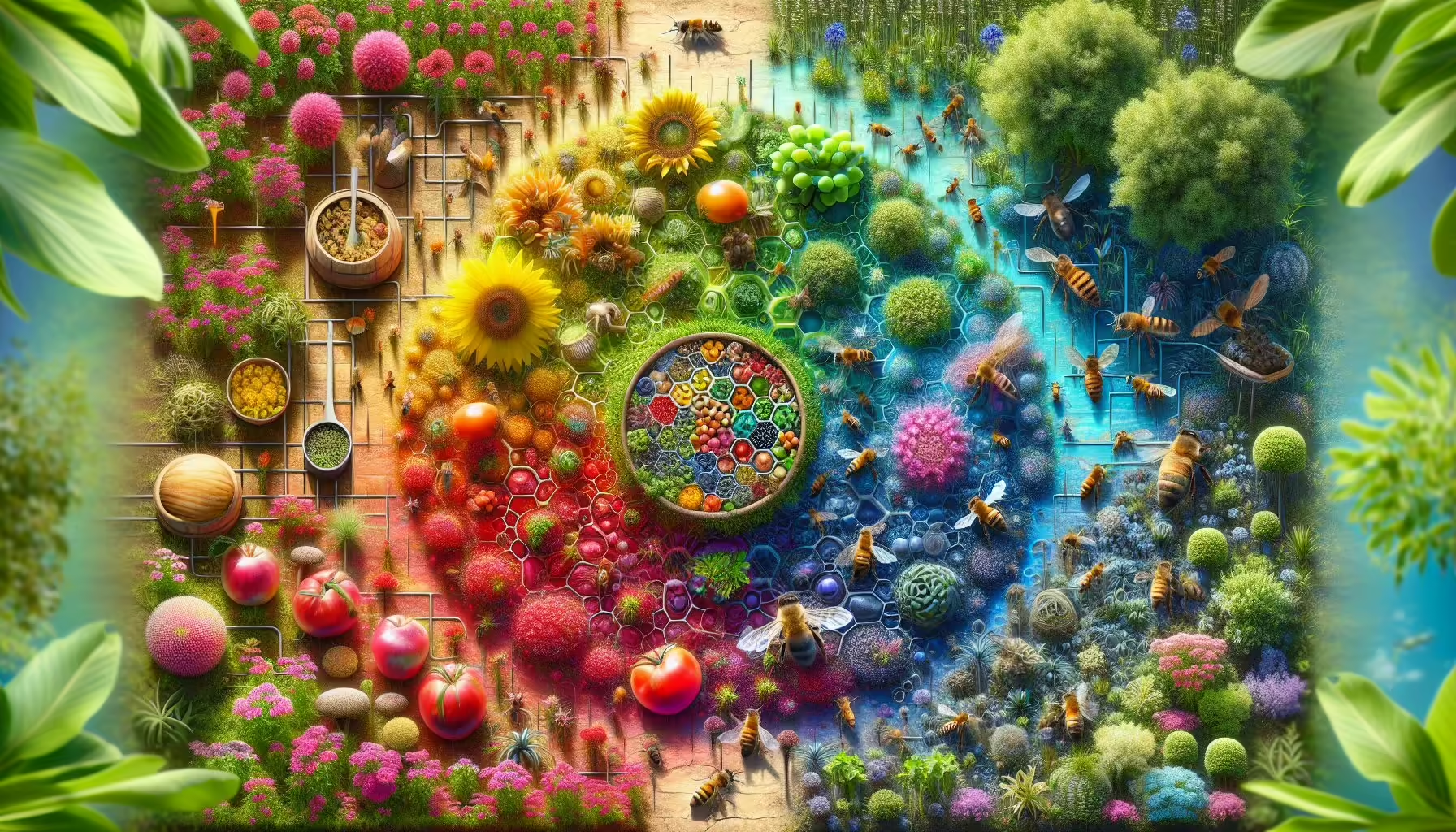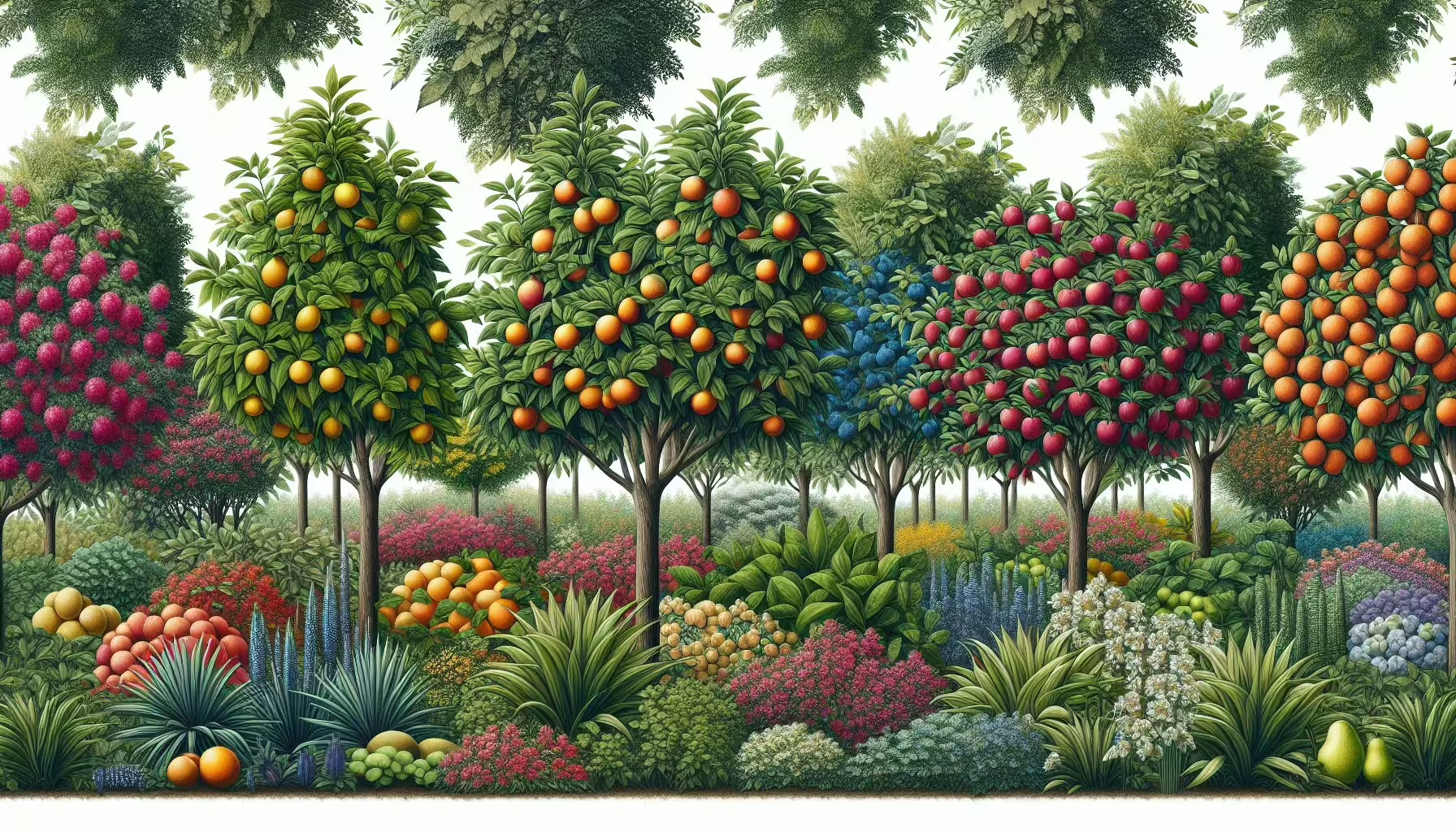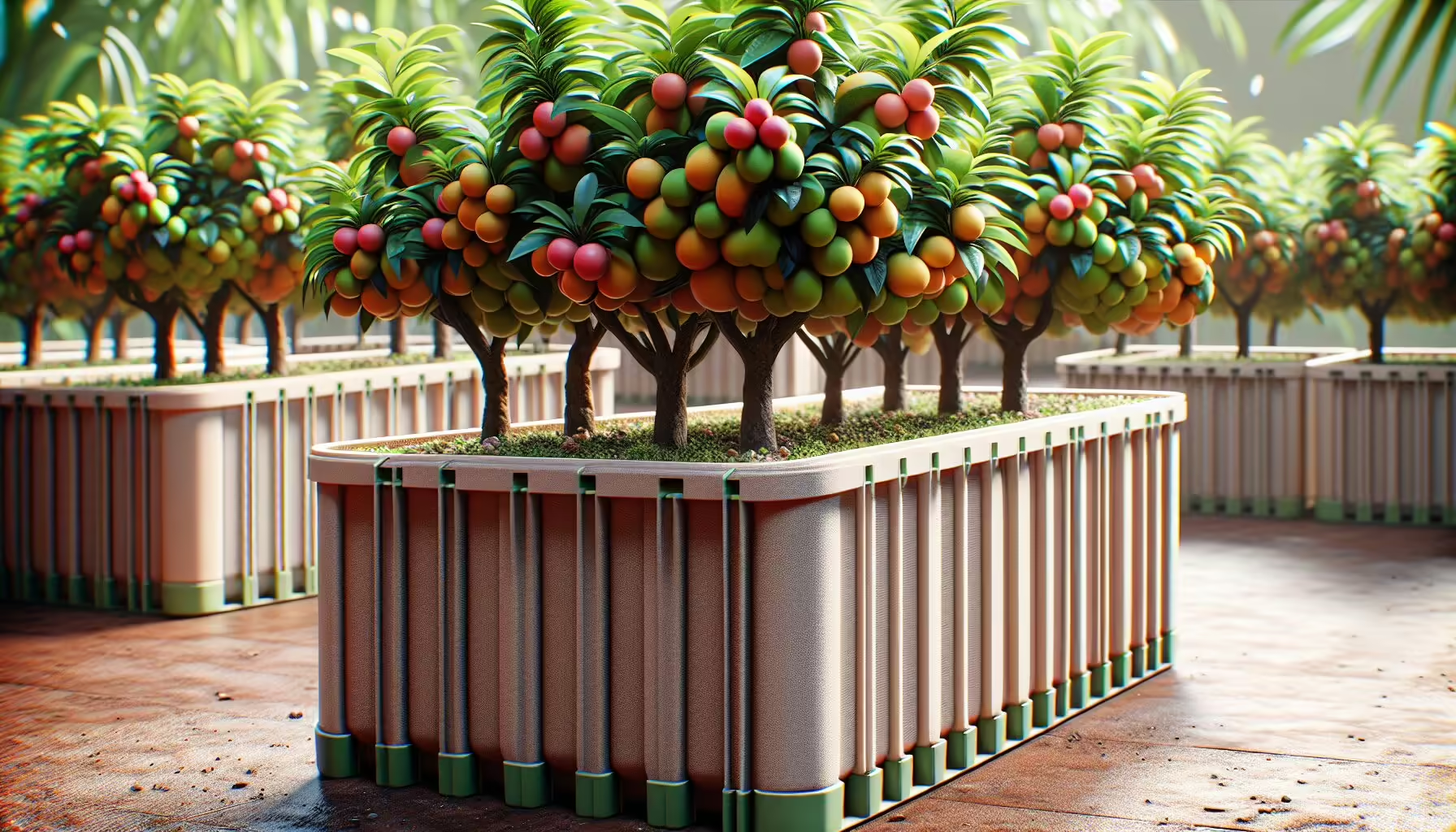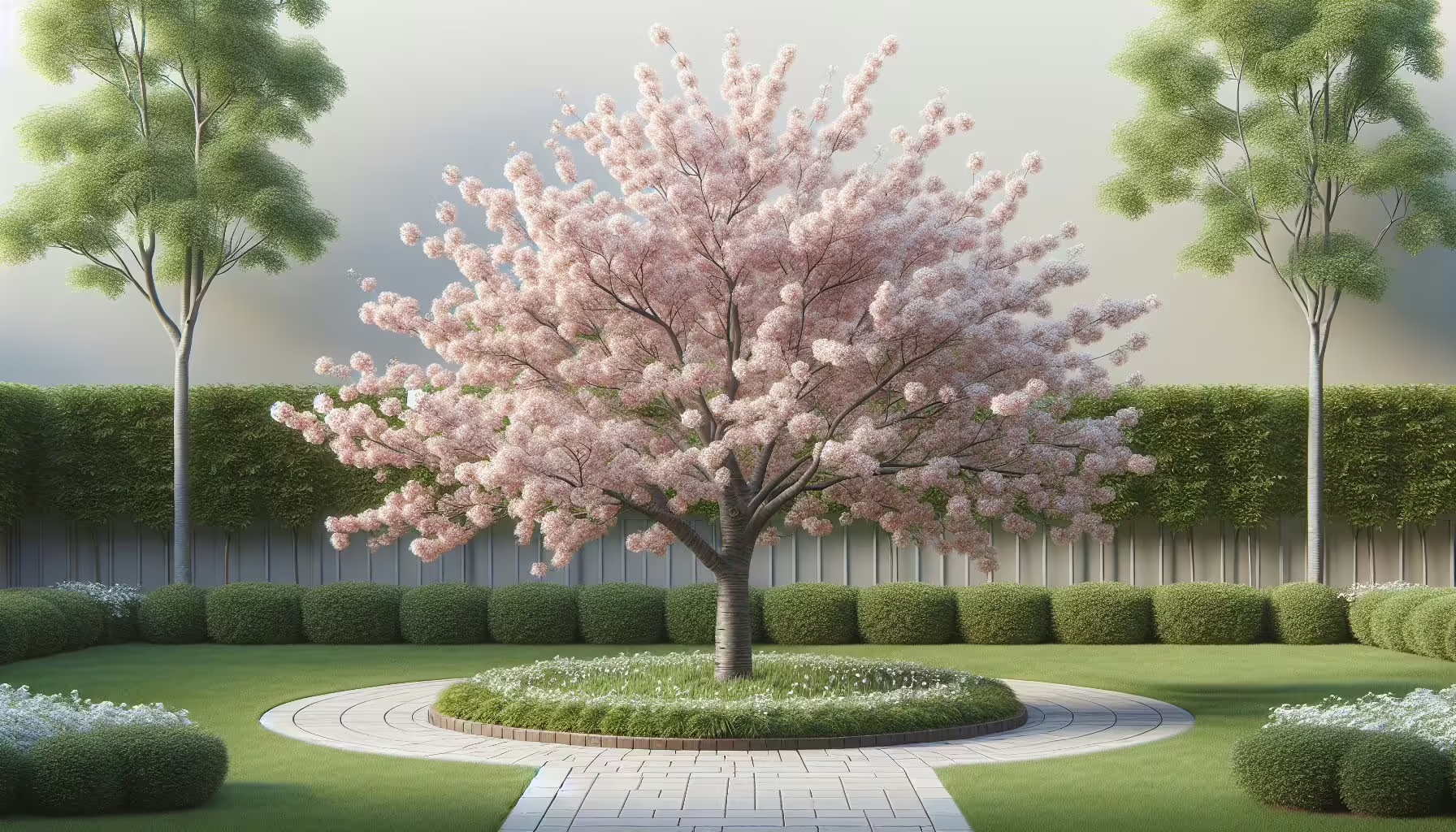Blooms and Breezes: Enhancing Edible Pollinator Gardens with Microclimates
Understanding Pollinator Gardens
Crafting a buzzing haven for pollinators is all about the right flowers and a little local plant know-how. I’ve learned that picking flowers that pollinators can’t resist really amps up the appeal for bees, butterflies, and their pals.
Importance of Spring Flowers
Spring flowers are like the breakfast buffet for pollinators waking up from their winter naps. After the cold bites the dust, I fill my garden with spring blooms to roll out the welcome mat for these critical guests. Here’s a couple I rely on each spring:
| Plant Name | Type |
|---|---|
| Amsonia hubrichtii | Bluestar |
| Polemonium reptans | Creeping Jacob’s Ladder |
Not only do they jazz up the garden, but they’re also busting with the nectar and pollen needed early in the year, giving those pollinator crews a kickstart.
Site-Specific Plant Selection
Picking plants like a pro means knowing what’s gonna vibe with your garden spot. When I’m plotting out my space, I look at everything from soil type to how wet or dry it gets. This means my pollinator pals get what they need, and I don’t spend my time fussing over plants that just don’t belong. Healthy plants that fit right in are key to cutting down on care and boosting the garden’s naturally awesome vibes.
Figuring out your space’s quirks lets you work with what you’ve got instead of against it, creating a harmonious patch of buzzing life. For tips on getting your own pollinator paradise started, swing by our guide on how to start an edible pollinator garden, or check out what companions your edible garden is craving with best companion plants for edible pollinator gardens.
Creating Microclimates for Plants
Turning my edible pollinator garden into a cozy haven has been a journey full of rewarding surprises. By playing around with the land and getting creative in how I set things up, I’ve found ways to boost plant growth and draw in the friendly visitors like bees and butterflies that keep everything buzzing.
Diverse Topography Advantages
I’ve noticed that just by mixing up the shapes and slopes in my garden, I can create little weather pockets that let me grow all sorts of plants. Raised beds or gently rolling hills can give different plant favorites a cool or warm spot to call home. For instance, I shape mounds, big or small, by building up extra soil or grass clippings (Awkward Botany).
| Topography Type | Benefits |
|---|---|
| Flat Areas | proper drainage; ideal for most veggies |
| Raised Beds | better airflow around roots; more drainage; sun warmth |
| Berms | special microclimates; varied moisture spots |
By switching up the landscape, I can tend to the needs of different plants, making my garden a lively and diverse place.
Utilizing Curbside Garden Beds
I’ve found that adding curbside garden beds is like giving my edible pollinator garden an extra layer of awesomeness in the microclimate department. These beds act like gentle shields, guarding plants against blustery winds and providing a tucked-away space. They hold onto water better than flat gardens, which helps tons when it doesn’t rain much.
To get the most out of those curbside beds, I make sure they’re super efficient with water. Keeping water levels around 18–20 inches encourages the roots to dig deep, making plants tough against dry spells (Utah State University Extension).
| Curbside Bed Features | Benefits |
|---|---|
| Water-loving Soil | needs watering less often; boosts plant health |
| Wind Shield | keeps delicate flowers safe; better plant growth |
| Toasty Soil Temps | kickstarts growth when spring hits |
By setting up curbside beds smartly, I’m not just making my pollinator garden prettier, but also laying down the red carpet for plants and their buzzing pals. If you want to start on this adventure, check out my tips on how to start an edible pollinator garden.
Factors for Low Maintenance Gardens
Getting a low-maintenance garden rolling isn’t rocket science if you know the secret sauce: smart choices. The main ingredients? Plants that get along with the environment and nifty ways to manage rainwater.
Environmental Adaptation
I gotta say, if you want your garden chow-ready and buzzing with pollinators, you gotta pick plants that play nice with Mother Nature. Think local vibes—what’s your climate like? How’s the dirt? Native plants are your best buds here. They’re pros at thriving with little fuss and invite all the good critters to hang out (Springer).
Mixing it up with the lay of the land helps too. For example, you can jazz up boring curbside plots into little hills, creating mini-weather zones for different plants (Awkward Botany).
| Adaptation Trick | Benefits |
|---|---|
| Variety of Plants | Keeps the wildlife happy and kicks pests to the curb. |
| Different Landscape Levels | Offers small climate pockets for plant diversity. |
| Local Heroes (Native Plants) | Drinks less water and eases up on your chores. |
Stormwater Management Benefits
Keeping an eye on water handling is a must-do for low-maintenance gardening. Those curbside plots I mentioned? They’re gold for catching, cleaning, and slowly releasing stormwater, keeping pollution at bay while doing Mother Nature a solid (Awkward Botany).
If you’re all about making it easy, try self-watering planters. They let plants sip water at their own pace, perfect if you’ve got a busy schedule or a black thumb (Foliaire).
| Water-Wise Method | Benefits |
|---|---|
| Curbside Beds | Grabs and sifts stormwater like a champ. |
| Self-Hydrating Pots | Cuts down watering chores and keeps soil wet. |
With a little love for environmental adaptation and savvy water tricks, my edible pollinator haven stays low-key yet buzzin’ with life. If you’re thinking of starting your own earthy paradise, check out how to start an edible pollinator garden for a deeper dive.
Attracting Pollinators
When it comes to building a buzzing, blooming paradise in my yard, picking the right plants makes all the difference. It’s like setting the table for a garden party where the guests come equipped with wings and fuzz precisely in the right places. This thoughtful selection not only lures pollinators but also sets the stage for a healthy little patch of nature.
Importance of Plant Selection
The plant pickin’s gotta be spot on to make sure my pollinator hangout is hoppin’. I have to keep in mind where I live—down to the nitty-gritty details like what my soil’s like and how thirsty my plot is. Picking champs for my particular climate cuts down on sweat-inducing chores and keeps the plants strutting their stuff (Awkward Botany). Native plants? Oh, they’re the heart and soul of the garden, making local insects and birds feel right at home.
| Plant Type | Best For | Benefits |
|---|---|---|
| Native Wildflowers | Bees, Butterflies | Give a big hug to local wildlife |
| Perennial Herbs | Bees, Flies | Dish out food and crash pads |
| Edible Flowers | Butterflies | Look sweet and are sweet to eat |
I’ve noticed that when I toss in some low-lying greenery, it’s an insect fiesta. The creepy-crawlies like spiders and beetles are hard to keep away, and they’re ace at keeping the more sinister pests in check (Springer). The more varied my planting, the tougher my garden becomes, bouncing back from whatever’s thrown at it.
Dive into Pollinator Species
Pollinators, I mean the buzzing bees, fluttering butterflies, nifty flies, and the shy beetles – they keep the floral love going. Bees, especially, are family folks; they scrimp and save every speck of pollen for their young ‘uns (Toronto Master Gardeners).
Getting to know who’s flying by can inform my planting game plan. Different pollinators have their flower favorites, and by rolling out a floral buffet, I make sure I have something for everyone.
| Pollinator | Preferred Plants |
|---|---|
| Honeybees | Sunflowers, Clover, Lavender |
| Monarch Butterflies | Milkweed, Zinnias, Coneflower |
| Hoverflies | Dill, Fennel, Mustard |
With a mix of housing and nosh for these critters, my garden becomes a real showstopper. Not to mention, it’s a leg up for the ecosystem. Whenever I’m feeling stuck, I hit up guides on how to start an edible pollinator garden and best companion plants for edible pollinator gardens to keep my garden in top form.
Efficient Watering Methods
In my edible pollinator garden, I’ve stumbled upon a couple of watering tricks that have breathed life into my plants. Trust me, figuring out how much H2O they need has been a game-changer. Let me walk you through two nifty options: capillary matting and self-watering planters.
Capillary Matting
Picture this: a magical mat that keeps plants hydrated without you having to do much. Capillary matting does just that by using a special wicking material to suck water up from a stash. If you’re juggling a bunch of plants—like me in my community garden plot—this method is a lifesaver.
Here’s the deal: capillary mats make sure the soil doesn’t get too thirsty and that roots grow like champs. The plants help themselves to water whenever they feel the urge. Let me break down why capillary mats are my garden sidekick:
| Perks of Capillary Matting | Why It Rocks |
|---|---|
| Keeps Things Wet | No more guessing if you’ve over or under-watered. |
| Perfect for Plant Hoarders | Ideal for folks like me with a city garden overflowing with greenery. |
| Happy Roots | Gives roots the consistency they crave, leading to super healthy plants. |
Self-Watering Planters
Another gardening miracle in my toolkit is the self-watering planter. These planters have a hidden water treasure at the bottom, and plants can take a sip whenever they’re parched. Less work for me, more oomph for my plants!
Self-watering planters are a godsend for those of us who’ve got a packed schedule or might sometimes overlook thirsty plants. Here are the benefits in a nutshell:
| Why Self-Watering Planters Rock | How They Help |
|---|---|
| Say Bye to Frequent Watering | Fewer reminders to water, more time for you. |
| Steady Water Levels | Keeps moisture just right, all the time. |
| Perfect for Busy Bees | Great for when your calendar is full or if you’re a bit forgetful. |
These two watering wonders have transformed my edible pollinator garden into a lush haven. By giving plants what they need right when they need it, I’m not just growing plants—I’m inviting all the bees and butterflies to party in my garden paradise. Cheers to vibrant blooms and buzzing guests!
Spicing Up Your Edible Pollinator Gardens
Creating an edible pollinator garden that’s a buzzing hotspot is a thrilling adventure for any plant-loving soul. I rely on a couple of game-changers to keep my garden vibing: the good ol’ plant dunking technique and misting rituals, especially for those diva tropical plants. These tricks help my green pals soak up all the TLC they need to thrive.
Plant Dunking Technique
Ever tried dunking your plants like a cookie in milk? This method is a lifesaver, especially for those parched pot-buddies. You dunk the whole plant in water and watch as it slurps up the moisture through its roots. It’s like giving your plants a spa day! This is gold for big pots or plants having a sun hangover.
| Plant Size | Dunk Time |
|---|---|
| Small (6-8 inches) | 5 minutes |
| Medium (10-12 inches) | 10 minutes |
| Large (14+ inches) | 15-20 minutes |
By timing each dunk session, I avoid turning my plants into soggy messes and keep things neat. It streamlines watering sessions, which is a blessing during those scorching months.
Misting for Tropical Plants
Misting is the VIP treatment for my tropical greenery. With a spritz-spritz here and there, I turn their world into a mini tropical getaway, full of humid goodness. This water ballet helps keep plant life thriving and a few bugs at bay too.
What does misting do?
- Boosts humidity levels, essential for tropical darlings.
- Puts a damper on pesky bugs that don’t like getting wet.
- Gives leaves a lovely sip, handy when the air gets dusty-dry.
My misting schedule changes like the weather, to keep plants happy:
| Weather | Misting Frequency |
|---|---|
| Hot & Dry | Twice daily |
| Mild & Humid | Daily |
| Cool | Every other day |
These dunking and misting tricks are my secret sauce for a garden that’s both a feast for the eyes and for pollinators like bees and butterflies. Want to dive into creating your own edible pollinator paradise? Peek at my guide on how to start an edible pollinator garden.




Post Comment